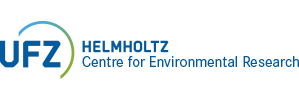Publication Details |
| Category | Text Publication |
| Reference Category | Journals |
| DOI | 10.1016/j.scitotenv.2024.177376 |
Licence  |
|
| Title (Primary) | Weather dynamics affect the long-term thermal and hydrological performance of different green roof designs |
| Author | Wollschläger, N.; Schlink, U.
|
| Source Titel | Science of the Total Environment |
| Year | 2024 |
| Department | ENVINF; SUSOZ; SUBT |
| Volume | 957 |
| Page From | art. 177376 |
| Language | englisch |
| Topic | T5 Future Landscapes T7 Bioeconomy |
| Keywords | Green roof; Urban climate; Climate adaptation; Urban stormwater management; Retention effect; Evapotranspiration; Surface energy balance |
| Abstract | Owing to climate change, numerous regions around the world are expected to experience heightened occurrences of extreme events, including heat waves and intense precipitation. This will disproportionately impact the well-being of urban populations. The implementation of green roofs is actively considered as a viable climate adaptation strategy enhancing the resilience of cities. Green roofs have the potential to mitigate elevated temperatures within urban environments and play a crucial role in retaining stormwater. While many cities have included green roofs as a proposed funding tool in their climate adaptation plans, there is still a knowledge gap regarding best practice design and the long-term performance of green roofs as they are sensitive to meteorological conditions. We analyzed lysimeter measurements for different roof designs (a traditional gravel roof, an extensive green roof, and a wetland green roof) in terms of their cooling potential (evapotranspiration rates) and retention capacity for stormwater events over 31 months in a time-series framework, to evaluate the impact of the local climate variability and conclude about the best maintenance practices. While the wetland green roof generally showed the best summertime cooling and runoff reduction (total retention of 82.4 % compared to 63.4 % for the extensive green roof, and 29.9 % for the gravel roof), respectively, under optimal conditions, the extensive green roof GR was able to perform comparably. However, when the evapotranspiration of the extensive green roof decreased during persistent dry periods (daily sum of from 1.27 mm to 0.73 mm), their cooling potential was low for these days. This is critical as hot days occurred more frequently for these periods (37 hot days of 106 days during dry periods; 7 hot days of 127 days during wet periods). This indicates the urgent need for summertime irrigation. |
| Persistent UFZ Identifier | https://www.ufz.de/index.php?en=20939&ufzPublicationIdentifier=29922 |
| Wollschläger, N., Schlink, U., Trabitzsch, R., Moeller, L. (2024): Weather dynamics affect the long-term thermal and hydrological performance of different green roof designs Sci. Total Environ. 957 , art. 177376 10.1016/j.scitotenv.2024.177376 |
|
